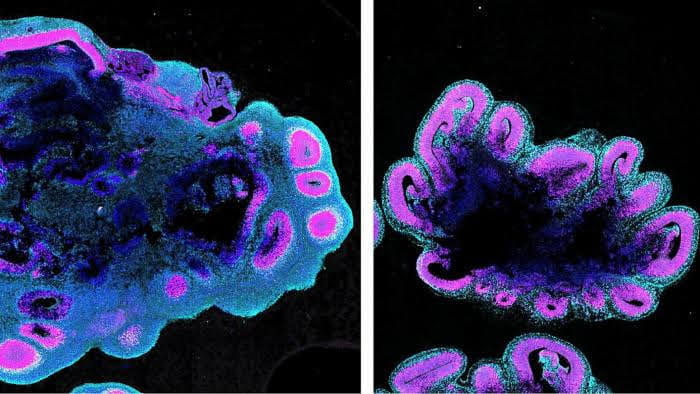Scientists identify genetic switch that helps determine how many neurons grow in an embryo Human, left, and chimpanzee mini-brains at five weeks old © S.Benito-Kwiecinski/MRC LMB/Cell
Clive Cookson, Science Editor | Financial Times | MARCH 24 2021
Researchers in Cambridge have identified a key genetic switch that ensures humans develop much bigger brains than apes, an important step in the scientific understanding of neural development.
The team at the MRC Laboratory of Molecular Biology led by Madeline Lancaster made the discovery after comparing so-called mini-brains grown from human, gorilla and chimpanzee stem-cells. Mini-brains, known more formally as cerebral organoids, are pea-sized neural assemblages grown in laboratories that mimic aspects of real brains.
The researchers found that a gene called ZEB2, a master regulator that switches other genes on and off, played a key role in determining brain size. ZEB2 activates later in humans than in apes, allowing more time for stem cells called neural progenitors to multiply and laying the foundation for the larger human brain.
Other researchers have used organoids to shed light on the next stage of embryonic brain development. Two scientific teams found in 2018 that a quite different group of genes played a critical role in the expansion of radial glia into functioning neurons in humans but not in other primates.
One of those involved in that research, Sofie Salama of the University of California Santa Cruz, emphasised that the findings by Lancaster’s team were an important contribution. “Research is moving ahead faster than ever but we’re only just beginning to understand what makes the human brain so big, so complex and so capable,” Salama said.
